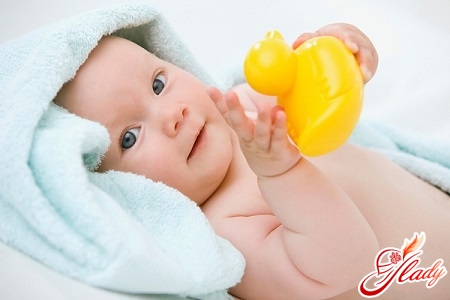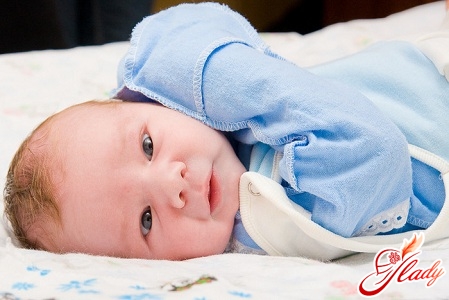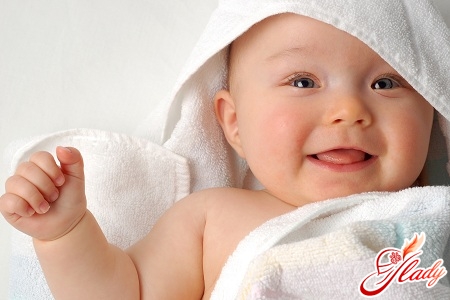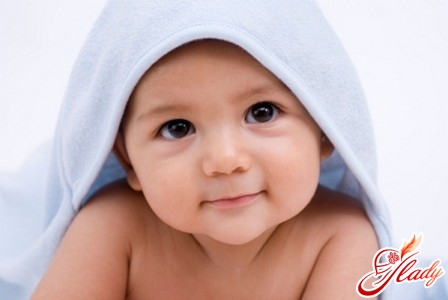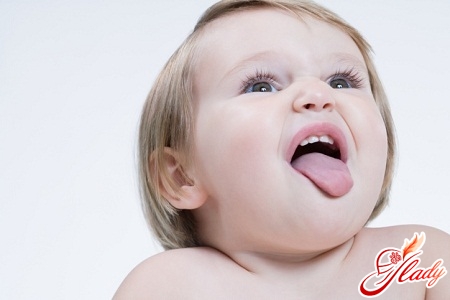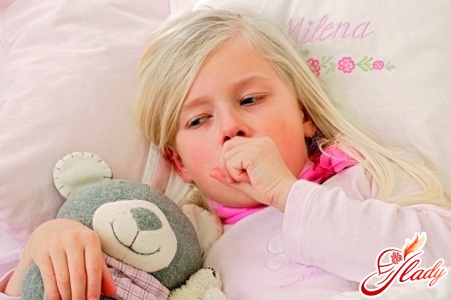 Unfortunately, our children periodicallyare sick, and if an adult can say about his ailment, then a child at an early age will not say anything. And older children cannot always objectively assess their condition. Therefore, we recommend that you constantly observe your child and carefully study all unusual phenomena. And one of the most common problems with children's health is a cough. It is a cough that is a symptom of a variety of diseases. One of these diseases is bronchitis. This is what we will talk about in this article. Obstructive bronchitis in children can be severe, especially if the disease is neglected. As a rule, it begins unnoticed with a rare cough, which is not always recognized as a symptom. In addition to coughing, in the early stages of the disease, obstructive bronchitis symptoms indicating the disease are absent, but after a very short time, the following signs appear:
Unfortunately, our children periodicallyare sick, and if an adult can say about his ailment, then a child at an early age will not say anything. And older children cannot always objectively assess their condition. Therefore, we recommend that you constantly observe your child and carefully study all unusual phenomena. And one of the most common problems with children's health is a cough. It is a cough that is a symptom of a variety of diseases. One of these diseases is bronchitis. This is what we will talk about in this article. Obstructive bronchitis in children can be severe, especially if the disease is neglected. As a rule, it begins unnoticed with a rare cough, which is not always recognized as a symptom. In addition to coughing, in the early stages of the disease, obstructive bronchitis symptoms indicating the disease are absent, but after a very short time, the following signs appear:
- Coughing
As the disease progresses, a slight cough develops into a severe, debilitating cough. The cough is especially bothersome to the child at night, practically depriving him of normal sleep.
- Runny nose
A runny nose is unlikely to surprise parents – everyone is used to their kids’ runny noses. However, in some cases, a runny nose may indicate not a common ARI, but bronchitis.
- Redness of throat
In addition to a runny nose, bronchitis is often accompanied by a reddened throat. Therefore, if your baby complains of a sore throat, be especially attentive - a cough can appear at any time.
- Increased body temperature
An increase in body temperature is also a very common companion of bronchitis. This is explained very simply - the inflammatory process causes hyperthermia.
What is obstructive bronchitis?
First of all, you need to disassemble the unit itself.the concept of this name. "Obstructive" comes from the word obstruction and means in translation - narrowing, spasm or compression, the term bronchitis (bronxit) comes from the word bronchi - this is the name of one of the pulmonary sections in the human body. So, if you combine these two concepts, then obstructive bronchitis is a spasm or narrowing of the bronchi, as a result of which the accumulated mucus cannot come out, which complicates the respiratory processes. If the pediatrician has diagnosed obstructive bronchitis, treatment should be started immediately and directed at reducing bronchial spasm so that the body can remove phlegm. During such treatment, we advise you to support your immunity, i.e. "raise" it with the help of additional drugs. Such drugs include: Interferon; Viferon and a number of other immunostimulants. Bronchitis in children can be accompanied by several types of cough: dry cough, sometimes with pronounced wheezing and wet cough. There are special medications for each of these types of cough. Therefore, consult a doctor about which drug will achieve the best result. You should not rely only on your own strength and knowledge when treating a child, improper treatment can lead to the disease progressing to more severe stages or the appearance of side effects in any other place. Recurrent obstructive bronchitis is especially dangerous. It is much more severe, and the health consequences can be much more dangerous. Firstly, the child's lung function deteriorates significantly, as a result of which bronchitis in the baby occurs more and more often. Secondly, the immune system suffers. And thirdly, in especially severe cases, there is a risk that bronchial asthma will develop. Therefore, bronchitis should not be ignored under any circumstances. If your child starts coughing, be sure to pay attention to it. If the disease is treated incorrectly or insufficiently, it can develop into a chronic form, which will entail constant problems in the general well-being of a person. Such problems include: insufficient ventilation of the pulmonary system, resulting in constant shortness of breath with minor exertion, acute cough, inflammation of the bronchi, and others.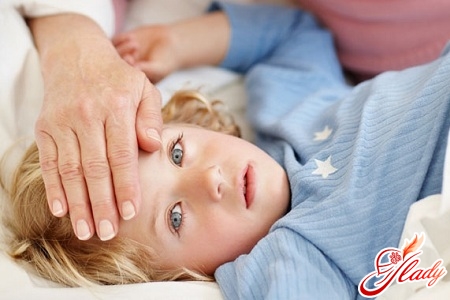
Treatment
There are several general recommendations for obstructive bronchitis in children:
- Treatment of such a disease should be rapid and effective
When we have a common cold, many of us wait until the very endAvoid using antibiotics, as they disrupt the intestinal microflora. In this case, it is better not to use this principle. The consequences of obstructive bronchitis in children can be very negative. The following drugs will help you restore the microflora of the gastrointestinal tract: Linex, Bifidobacterium or liquid bifidobacteria.
- The appearance of wheezing in the bronchi means an abundant accumulation of mucus, which the body can not infer independently
In that case, you should help him a little.To do this, you need to liquefy the mucus. Inhalation is the most effective way to cope with liquefaction. When inhaling, do not use cough suppressants, they will only do harm, and you should also not use coniferous inhalations, since they in the vast majority provoke a new attack of spasms and coughing. Inhalations should contain alkaline solutions, which can also be mineral. If there are no allergic reactions to these solutions, essential oils can be added to them. It is best to consult a doctor about the use of a particular drug for inhalation.
- Necessarily it is necessary to wash out a nasopharynx
The best drugs will be those containing silver.to combat runny nose and the proliferation of bacteria and viruses. Direct rinsing is also carried out with saline, Borjomi and silver-containing products. To restore nasal breathing, vasoconstrictor drugs are used - tizin, oxymetazoline, etc. Nasal drops cannot be used for a long time - this can lead to atrophy or hypertrophy of the nasal membrane.
- If a child has a high fever, it is necessary to comply with bed rest before normalizing this temperature
The diet during this period should be dairy-based.vegetable, rich in vitamins, drinks – tea, fruit drink. Hot milk with Borjomi – plenty of it. Antipyretic drugs should be given only when the body temperature exceeds 38.5ºС. The most optimal drug in this case is paracetamol. Amidopyrine, antipyrine, phenacetin should not be given to children. It is not recommended to use aspirin and analgin – they can give negative side effects.
- Not the least role in the treatment of bronchitis is played by massage
Effective for removing residual phlegmvibration massage. In addition, the doctor may prescribe postural massage. Very often, parents ignore massage, believing that it will not bring any significant effect. However, this is not true at all - massage helps the lungs and bronchi to clear themselves of phlegm. Massage works very simply - with certain movements and effects on the chest, the doctor makes the phlegm separate from the bronchi and, accordingly, come out. Moreover, massage can help get rid of even a chronic cough. Therefore, massage is very effective for chronic bronchitis. But for this, it is extremely important that the massage is done professionally. It is unlikely that parents will be able to do the massage themselves properly. Therefore, if the pediatrician has prescribed a massage for your child to treat bronchitis, do not refuse it. After all, massage can really help the child cope with the disease much faster.
- Treatment of bronchitis is always only complex
The doctor prescribes vitamins to supportgeneral condition of the body. And special attention should be paid to nutrition. The diet of a sick child should be light at the same time, so as not to put additional stress on the body, but also nutritious. After all, the body must have the strength to fight the disease. Therefore, be sure to discuss your child's nutrition with the attending physician. If the high temperature lasts more than three days, and respiratory failure increases, the treatment becomes more serious - antibacterial and antiviral therapy may be prescribed. Drug treatment is prescribed only by the attending physician - do not self-medicate under any circumstances!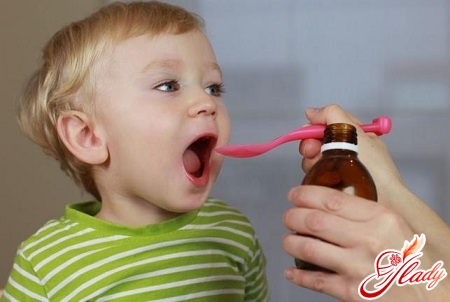
Bronchitis in infants
In the event that bronchitis has developed ininfant, parents should be especially attentive. Small children under one year of age are the most vulnerable and tolerate bronchitis much more severely. And the reasons for the development of bronchitis in such babies are sometimes much more serious. For example, sometimes the culprits of bronchitis are amniotic fluid, which gets into the baby's bronchi at birth. Moreover, this complication can make itself known for quite a long time - approximately until the end of the first year of the child's life. Of course, curing bronchitis in a baby is no more difficult than in older children. However, remember that in infants under one year of age, bronchitis should never be treated on your own. No one can predict how the baby's body will react to this or that treatment, so you should not experiment. Moreover, regardless of the reasons that led to the development of bronchitis, doctors prefer to treat bronchitis in infants under one year of age exclusively in a hospital.
How to prevent a disease?
It is very important for parents to remember that disease prevention is a much more reasonable solution than its treatment. Moreover, bronchitis prevention is very simple. It consists of several stages:
- Enhancing the immunity of a child
As is known, the main protector of a person ishis immunity. The child is in a very interesting position - his immune system is not yet fully functional. Therefore, it is necessary to carefully monitor the child's immunity, strengthening it in every possible way.
- Tempering of children
Actually, this point follows fromprevious. After all, what can strengthen a child's immunity better than hardening? However, remember the need to observe moderation - you should not go to extremes. Hardening should be gradual and step-by-step. You should not pull the baby out of the sweater and pour cold water on him in the frost.
- Timely treatment of ARI and ARI started
In about half of all cases of bronchitis itis nothing more than a complication of a common cold or acute respiratory viral infection. Therefore, a cough must be treated immediately after its appearance, without putting it off for later. This is the best prevention of bronchitis. The appearance of a hoarse cough, shortness of breath, wheezing when breathing in a child are very alarming signs. If they occur, you should immediately consult a doctor and make every effort to eliminate the disease. The child's health depends entirely on the parents, on their attention, diligence and careful care. We recommend reading:




